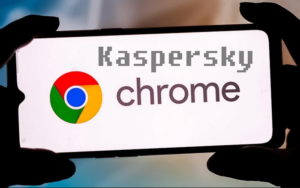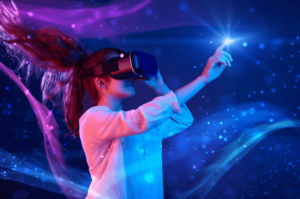As the hot season approaches, it becomes increasingly important to find effective ways to keep our homes cool and comfortable. Excessive heat not only affects our overall well-being but can also lead to increased energy consumption and higher utility bills.
In this comprehensive guide, we will explore various strategies and techniques to help you keep your house cool during the hot season. From optimizing your windows and ventilation to implementing effective cooling systems, we will cover a wide range of solutions that will enable you to maintain a cool and refreshing environment within your home.
I. Understanding Heat Transfer:
Before diving into the various cooling strategies, it’s essential to understand how heat transfers within your home. Heat transfer occurs through conduction, convection, and radiation.
A. Conduction: Conduction refers to the transfer of heat through solid materials. Insulation plays a vital role in reducing heat conduction, ensuring that heat doesn’t penetrate your home’s interior.
B. Convection: Convection is the process of heat transfer through the movement of air or fluid. Proper ventilation allows hot air to escape while facilitating the entry of cooler air.
C. Radiation: Radiation occurs when heat travels in the form of electromagnetic waves. It is crucial to minimize the absorption and emission of heat by implementing appropriate measures.
II. Improving Insulation:
Insulation acts as a barrier, preventing heat from entering or escaping your home. Focus on insulating your roof, walls, and windows to reduce heat transfer.
A. Roof Insulation: Insulating your roof can significantly reduce heat gain in your home. Consider options such as reflective roof coatings, radiant barriers, or insulated roof panels.
B. Wall Insulation: Insulating your walls helps maintain a consistent indoor temperature. Popular wall insulation options include batt insulation, blown-in insulation, and rigid foam insulation.
C. Window Insulation: Windows are a significant source of heat gain. Install weatherstripping, caulk gaps, and consider window films or double glazing to enhance insulation and reduce heat transfer.
III. Utilizing Natural Ventilation:
Natural ventilation promotes airflow, helping to cool down your home without relying on energy-consuming systems.

A. Cross Ventilation: Create a cross breeze by strategically opening windows on opposite sides of your home. This allows fresh air to flow through and carry away heat.
B. Window Management: Open windows during cooler evenings and early mornings to take advantage of lower outdoor temperatures. Close them during the day to prevent hot air from entering.
C. Ventilation Fans: Utilize ceiling fans, portable fans, or window fans to enhance airflow. Position fans strategically to create a refreshing breeze throughout your home.
IV. Controlling Sunlight and Heat Gain:
Minimizing direct sunlight and heat gain can significantly contribute to keeping your home cool.
A. Window Treatments: Install light-colored curtains or blinds to reflect sunlight. Consider using blackout curtains or thermal blinds to block out heat during the hottest parts of the day.
B. Exterior Shading: Implement exterior shading techniques such as awnings, shutters, or pergolas to block direct sunlight from entering your home.
C. Solar Reflective Films: Apply solar reflective films to your windows to reduce heat gain. These films reflect a significant portion of solar radiation while still allowing natural light to enter.
V. Managing Indoor Heat Sources:
Identify and manage indoor heat sources to prevent unnecessary heat buildup.

A. Appliances and Electronics: Turn off or unplug appliances and electronics when not in use, as they generate heat. Use energy-efficient models that produce less heat during operation.
B. Lighting Solutions: Switch to energy-efficient LED bulbs, as they emit less heat compared to traditional incandescent bulbs. Additionally, turn off lights in unoccupied rooms to reduce heat output.
C. Cooking Techniques: Avoid using the oven during hot days. Opt for alternative cooking methods such as grilling, using the stovetop, or utilizing a microwave to minimize heat generated in the kitchen.
VI. Efficient Cooling Systems:
When natural ventilation is not sufficient, cooling systems can provide relief from the heat.

A. Air Conditioning: Invest in an energy-efficient air conditioning system. Set the thermostat to an optimal temperature and use programmable settings to regulate cooling based on occupancy.
B. Ceiling Fans: Install ceiling fans in rooms to circulate air and create a wind-chill effect. Ceiling fans consume less energy compared to air conditioners and can make a room feel several degrees cooler.
C. Evaporative Cooling: Consider using evaporative coolers, also known as swamp coolers, in dry climates. These systems cool the air by evaporating water, providing an energy-efficient alternative to traditional air conditioning.
VII. Creating a Cool Outdoor Environment:
Transforming your outdoor spaces into cool and shaded areas can improve overall comfort.

A. Shade Structures: Install shade structures such as pergolas, umbrellas, or shade sails in your outdoor areas to provide relief from direct sunlight.
B. Outdoor Fans: Place outdoor fans strategically to create a refreshing breeze and enhance comfort when spending time outdoors.
C. Water Features: Incorporate water features like fountains or misting systems in your outdoor spaces. The evaporation of water helps cool the surrounding air, providing a pleasant environment.
VIII. Energy-Saving Tips:
Implementing energy-saving practices not only reduces your environmental impact but also helps lower utility costs.
A. Smart Thermostats: Install smart thermostats that can be programmed and controlled remotely. They optimize cooling based on your schedule, saving energy when you’re away.
B. Energy-Efficient Appliances: Choose energy-efficient appliances, such as refrigerators and air conditioners with high Energy Star ratings. These appliances consume less energy and produce less heat.
C. Timers and Automation: Use timers and automation features to schedule the operation of appliances, lighting, and cooling systems. This prevents unnecessary energy usage and heat generation.
IX. Lifestyle Adjustments:
Adopting certain lifestyle habits can contribute to a cooler indoor environment.
A. Dressing Appropriately: Wear lightweight and breathable clothing during hot days. Opt for natural fabrics that allow air circulation and help wick away moisture.
B. Hydration and Cooling Foods: Stay hydrated by drinking plenty of water and consuming cooling foods. Fresh fruits, vegetables, and beverages like iced tea or fruit-infused water can help regulate body temperature.
C. Strategic Room Usage: During the hottest parts of the day, spend time in the coolest areas of your home, such as basements or lower floors. Close off unused rooms to minimize the space that needs cooling.
X. Additional Tips and Considerations:
A. Proper Maintenance: Regularly clean and maintain your cooling systems, such as air conditioners or fans, to ensure they operate efficiently. Clean or replace air filters as recommended by the manufacturer.
B. Landscaping Techniques: Strategically plant trees, shrubs, or vines around your home to provide shade and reduce heat absorption. Opt for plants with dense foliage to create a natural cooling effect.
C. Professional Assessments: Consider consulting with energy auditors or HVAC professionals to assess your home’s energy efficiency and recommend customized solutions for keeping your house cool.
Conclusion:
Keeping your house cool during the hot season is essential for your comfort and well-being. By understanding heat transfer, improving insulation, utilizing natural ventilation, controlling sunlight and heat gain, managing indoor heat sources, implementing efficient cooling systems, creating a cool outdoor environment, adopting energy-saving practices, making lifestyle adjustments, and considering additional tips and considerations, you can significantly enhance the coolness and comfort of your home. Experiment with various strategies and find the combination that works best for your specific climate and lifestyle. Stay cool and enjoy the hot season in a refreshed and comfortable home.










